AMD's Ryzen 9 6900HS Rembrandt Benchmarked: Zen3+ Power and Performance Scaling
by Dr. Ian Cutress on March 1, 2022 9:30 AM ESTPower Consumption
On AMD’s official specifications for the Ryzen 9 6900HS, it lists the TDP as 35 W: the same specifications as the 6900HX, but at an optimized TDP. The HS means that it can only be used in AMD-approved and codesigned systems that can get the best out of the unit: i.e. it is an ultraportable premium device. That being said, laptop vendors can customize the actual final power limit as high as 80W, with the idea that because they are using an optimized voltage/frequency binned processor, the laptop design that can dissipate that much can extract more sustained performance from the processor, this usually translates into a higher all-core frequency.
For our ASUS Zephryus G14, the standard default power profile, known as ‘Performance’, is meant to conform to AMD’s Power Management Framework, i.e. scale from Energy Saving to Performance as required. In this mode, the system has a sustained 45 W power draw.
Performance: 45W
Loading up a render like POV-Ray, the system spikes the CPU package power to 83 W and 80ºC, before very quickly coming down to 45 W and a slowly rising temperature to equilibrium at 87ºC.
With something a bit more memory heavy, such as yCruncher, the same power profile is shown, this time with the power around about 81ºC for most of the test because it spends more time on memory access than raw throughput.
For a real-world scenario, Agisoft also spikes up very high initially, before reaching a plateau at 45 W and 90ºC.
Turbo: 65W
The other option on offer for this system is the ‘Turbo’ Mode, which jacks everything up to 65 W sustained.
This means we hit the peak temperature limits quite quickly, and the system ramps down over time to the 65 W average power.
The yCruncher profile is a bit more varied due to the CPU performance going further while the memory performance staying the same, but we still see temperatures in the mid 90s and power hovering more around 75 W.
Agisoft’s Turbo profile is all about being temperature limited in this case, and we still end up in the sustained parts of the test around that 65 W value.
If we were to look at how the power was distributed in each mode:
In performance mode, we see 16.0 watts when one core is loaded, going down to 5.2 watts per core when all cores are loaded and a frequency of 3775 MHz.
Compare that to the Turbo Mode:
The single-core data is the same, nothing changes there, but we’re now up to 7.2 watts per core when fully loaded, and a much higher frequency at 4050 MHz. But this means we’re using 17 watts more power (or 38% more power) for only 275 MHz (a 7% gain).
Looking at the frequencies in this format, you can see a slight difference in performance, but seemingly not that much to justify the power difference. Then again, I suspect Turbo is only really for when you are fully charged and plugged into mains power anyway.
For the following benchmarks, we’re going to be using both Performance and Turbo modes, but also I put the CPU in a 35W power mode. As the 1 core and 2 core loading is below this, it shouldn’t affect the single-core performance that much, but it might give us an understanding of where it compares to previous generations.


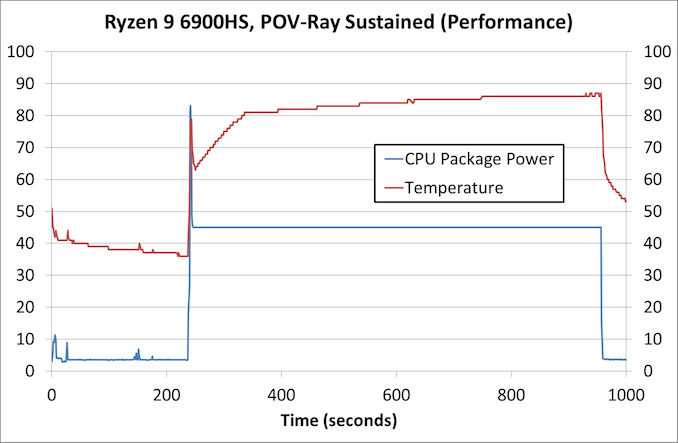
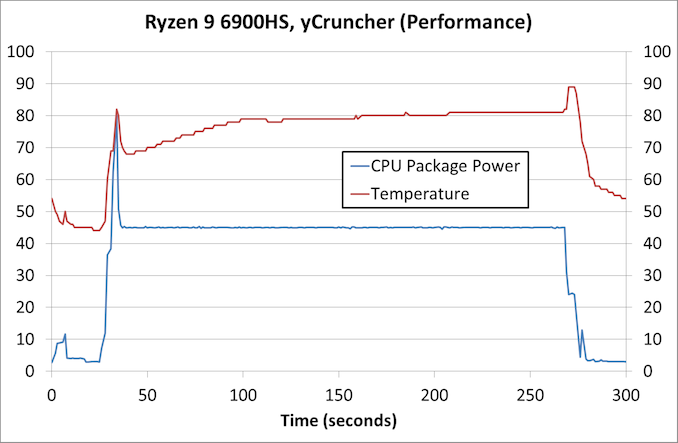
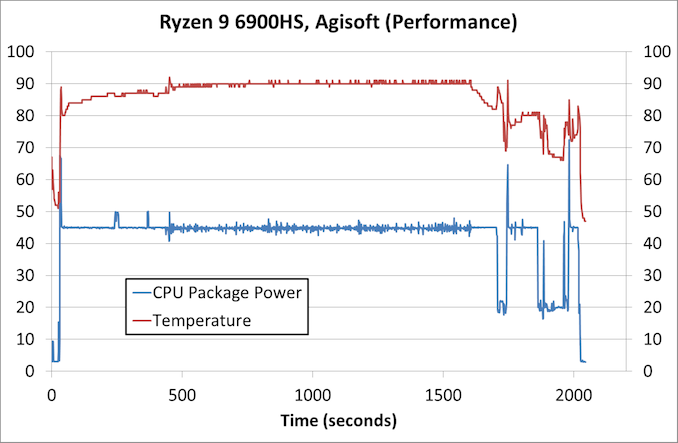

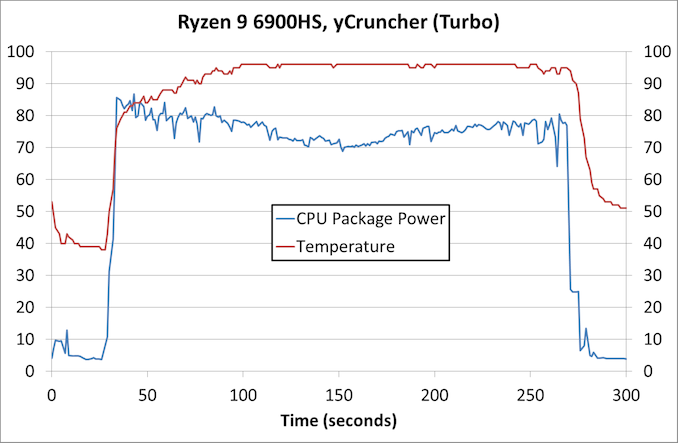
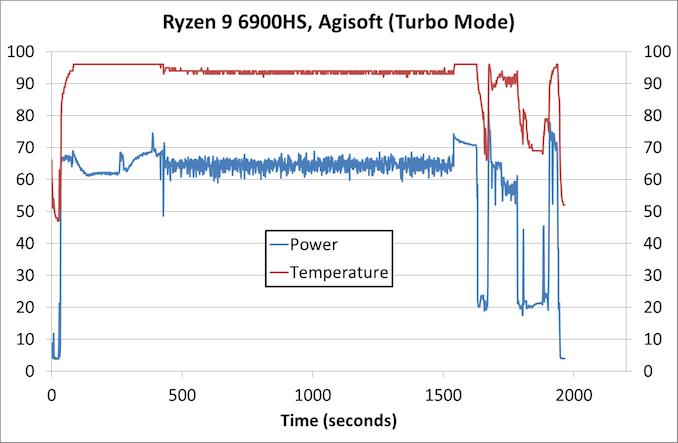
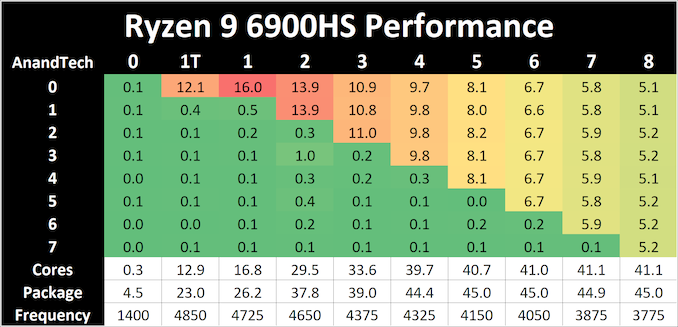
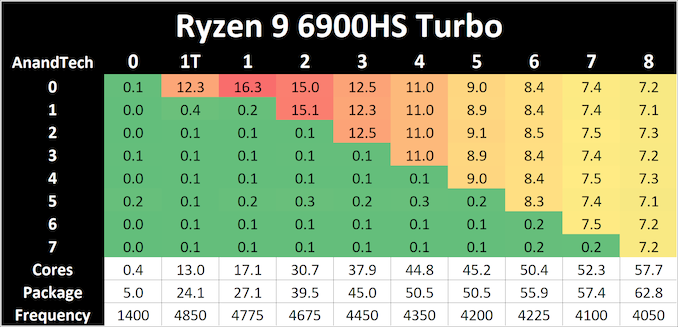









92 Comments
View All Comments
ingwe - Tuesday, March 1, 2022 - link
While I understand not looking at battery life in this, not looking at graphics is a big miss._abit - Tuesday, March 1, 2022 - link
Back to pimping intel ever so gentlySarahKerrigan - Tuesday, March 1, 2022 - link
In 35/45W laptops, including this one, a dGPU will generally be present, making it a little moot. I expect more of a focus on graphics in the 15W review.Kangal - Wednesday, March 2, 2022 - link
Not at all.Most laptops (+80%) are below 45W TDP and they don't have a dGPU, and rely on the iGPU. It's a shame AMD has dragged their heels in this segment. For that reason, RDNA-2 is a substantial upgrade for most laptop users, but if you want a thick, heavy, Gaming Laptop then you are better off with the (12th-gen) Intel CPU and Nvidia dGPU (GeForce 30).
Besides, I see AMD's tech as eras:
2015-era, 16nm, Zen1, Vega Graphics
2018-era, 8nm, Zen2, RDNA-1 graphics
2021-era, 6nm, Zen3, RDNA-2 graphics
2024-era, 4nm, Zen4, RDNA-3 graphics
...roughly speaking (obviously years don't align)
And someone earlier asked how do these different GPU architectures compare. It's hard to do a true Potatoes-to-Potatoes comparison. However, from my understanding of the latest options it goes:
Qualcomm Adreno 7th-gen > Apple Graphics M1 > PowerVr IMG B-series > AMD RDNA-2 > Nvidia Ampere > ARM Mali Valhall 4th-gen > Intel Xe 1st-gen.
...obviously even the latest 4nm Adreno 730 when maxed out at 10W TDP, is no match against an older 8nm RTX 3050 that is thermal limited to only 100W TDP.
cbutters - Tuesday, March 1, 2022 - link
I hate to say it, but I agree.... this is literally one of the biggest step increases in iGPU performance; EVER, and nobody is talking about it. Why? Does Intel have input on how these articles are written? Or does it contribute to the ad revenue and people are wary of disrupting that? Its literally the MOST interesting thing about this CPU.JasonMZW20 - Tuesday, March 1, 2022 - link
Mostly because these systems ship with dGPUs. The iGPU in mobile Ryzen 6000 is a nice upgrade and simply demolishes anything Intel offers, currently.The mainstream 15-28W article should focus on iGPU, as these won't ship with dGPUs, usually. This is the meat of the market, and a good iGPU is critical to a good experience.
AMD's mobile strategy seems to be a quick-iterative design. Renoir and Cezanne were nearly on top of each other, as Cezanne came back from the fab just as Renoir shipped. So, with mobile Ryzen 6000/Rembrandt, AMD offers a new iGPU+(LP)DDR5 rather than new CPU cores, plus SoC optimizations overall.
The one thing that bothers me about the RDNA2 iGPU is that AMD disables an entire shader array in the 6600U instead of simply turning off 2 WGPs (4 CUs). So, there's a sharp performance drop between the two models and 6600U will be the primary volume seller, I think. 12 CUs to 6 CUs, instead of 12 -> 8 -> 6.
DannyH246 - Tuesday, March 1, 2022 - link
Honestly it’s been like this for a while now. Just go to the home page and count how many Intel marketing articles we’ve had over the last couple months. Now we get a half arsed joke of a review like this on AMD hardware. Obviously in Intel’s pocket.29a - Tuesday, March 1, 2022 - link
Typical half assed AMD article.DannyH246 - Tuesday, March 1, 2022 - link
Next headline article on www.IntelTech.com….Breaking news Intel CEO Gelsinger breaks wind.
Qasar - Wednesday, March 2, 2022 - link
DannyH246 i see you cry about this all the time, if anandtech is that bad, WHY do you keep coming here ? is it just to whine and cry?? im sure you will just reply with some sort of BS, but it HAS been stated before, there are times when most articles are intel, and others are AMD, its just the way the cycles go.